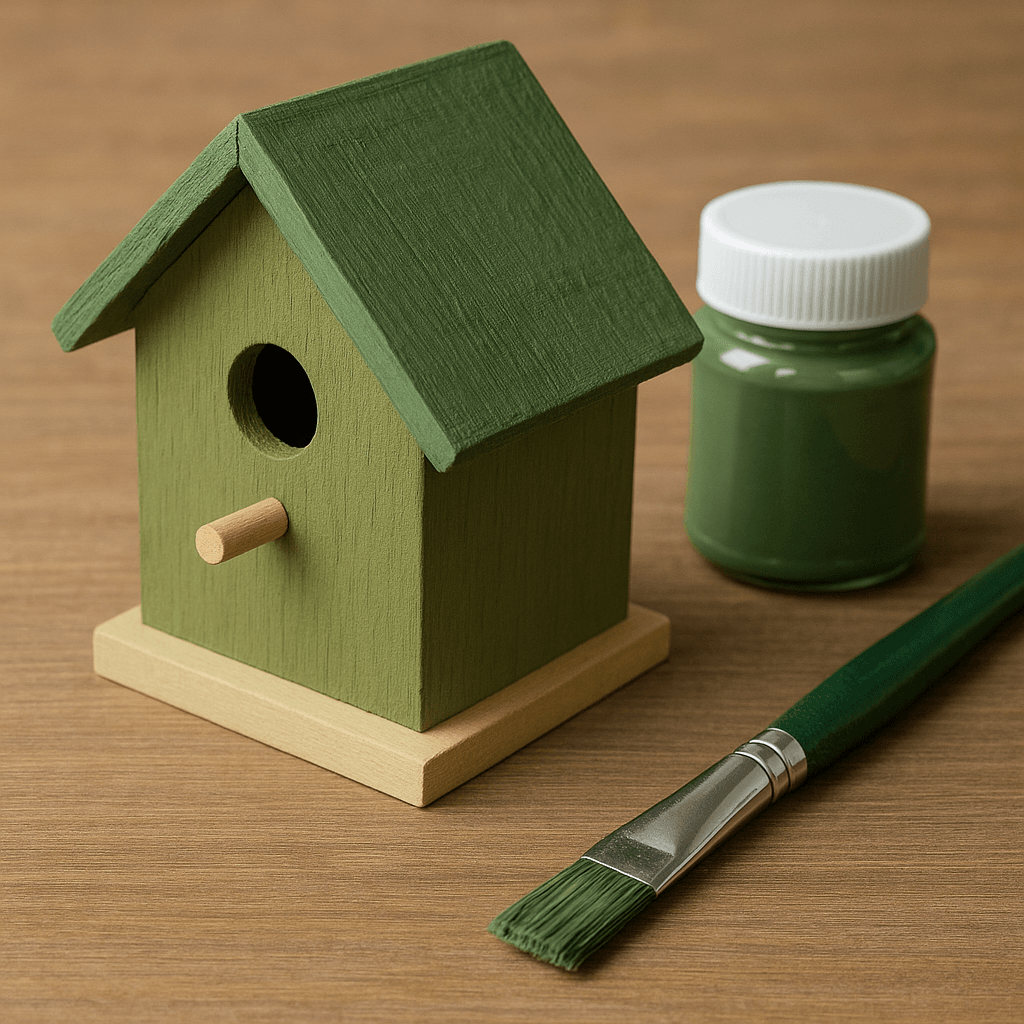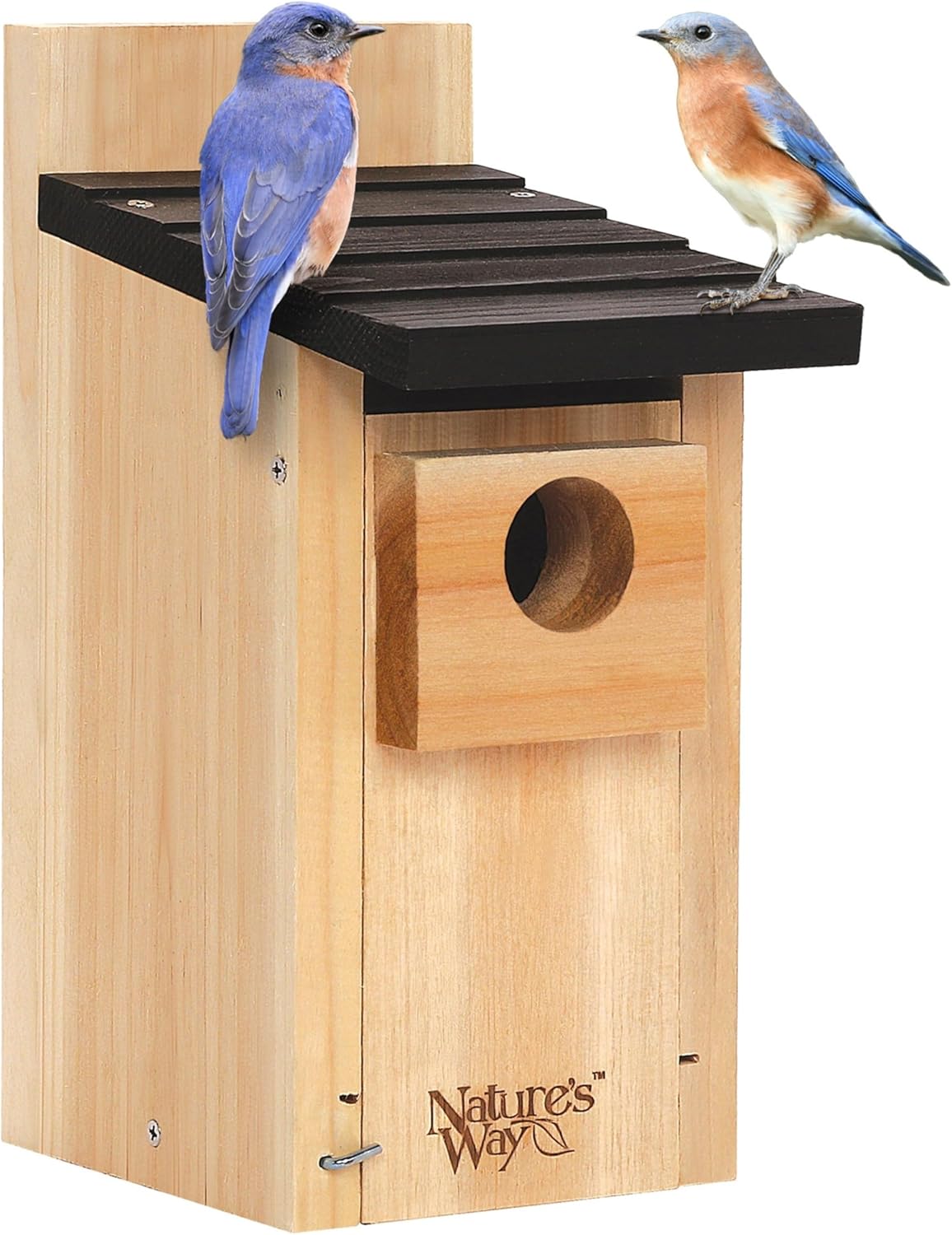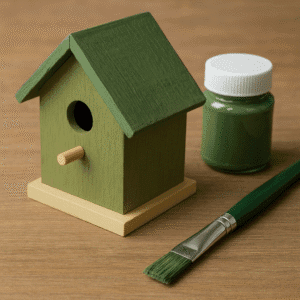The Best Paint for a Wooden Birdhouse: A Definitive 2026 Safety Guide

There’s a deep satisfaction in preparing a new birdhouse. As you run your hand over the smooth pine or cedar, you imagine the life it will soon hold. And then comes the question of the final touch: paint. It seems simple enough. But as I stood in the paint aisle years ago, surrounded by a dizzying array of options, I was struck by the weight of the decision. The choice I made wouldn’t just affect how the birdhouse looked in my garden; it would directly impact the health and safety of the tiny, fragile lives I hoped to host inside.
That realization launched me into a deep dive into the science of bird-safe materials. I consulted with ornithologists, chemists, and veteran conservationists, and what I learned was eye-opening. The chemicals, pigments, and finishes that are harmless to us can be catastrophic for birds. The wrong paint can release toxic fumes into the nesting cavity, seal up the wood’s natural breathing ability, or turn the box into a solar oven on a hot day. My journey transformed me from a casual hobbyist into a passionate advocate for bird safety. I now build and maintain dozens of nest boxes, and my painting process is a meticulous ritual guided by one principle: the well-being of the birds comes first.
This guide is the masterclass I wish I’d had. We will move beyond simple color recommendations to provide a definitive, science-backed framework for choosing and applying the safest possible finish to your wooden birdhouse. We will review the best products, detail the safest application techniques, and give you the expert knowledge you need to make a choice that is not only beautiful, but fundamentally responsible.
The Quick Answer: The Best & Safest Paint
The best and safest paint for a wooden birdhouse is a non-toxic, water-based latex or acrylic paint with a zero-VOC (Volatile Organic Compounds) or low-VOC rating. It should be applied in a flat or satin finish, and only to the exterior of the birdhouse.
- Paint Type: Water-based Latex or Acrylic.
- Toxicity: Must be labeled “Non-Toxic” and “Zero-VOC” or “Low-VOC”.
- Color: Natural, earthy tones (browns, grays, greens) for camouflage.
- Finish: Flat or satin (non-reflective).
- Application: Exterior surfaces ONLY. Never paint the interior or around the entrance hole.
Why Your Paint Choice is a Life-or-Death Decision
To birds, a birdhouse isn’t a decoration; it’s an incubator. It’s a climate-controlled, sealed chamber where they will invest all of their energy into raising the next generation. The choices we make in finishing that chamber have profound consequences.
The Danger of VOCs (Volatile Organic Compounds)
Traditional oil-based paints and stains contain VOCs, which are solvents that are released into the air as the paint dries. These fumes are what give fresh paint its characteristic smell, and they can be harmful to humans and devastating to birds. In the enclosed space of a birdhouse, these fumes can concentrate to toxic levels, causing respiratory damage, neurological problems, or even death in fragile nestlings. This is why selecting a **Zero-VOC or Low-VOC, water-based paint is non-negotiable.**
The Importance of “Breathability”
Wood is a natural material that needs to breathe. It absorbs and releases moisture. A high-quality water-based latex paint forms a film that allows some of this moisture vapor to pass through. Oil-based paints, however, can create an impermeable barrier, trapping moisture inside the wood. This can lead to condensation building up inside the birdhouse—a damp, chilled environment that is fatal for eggs and chicks. It also accelerates the rotting of the wood itself.
The Physics of Color: Thermoregulation
The color you choose has a direct impact on the temperature inside the birdhouse. Dark colors absorb more light and heat from the sun. A birdhouse painted black, dark blue, or dark brown can become a death trap on a sunny day, with internal temperatures soaring to over 120°F (49°C), literally cooking the occupants. Lighter, natural colors reflect sunlight and help keep the interior at a safe, stable temperature.
In a study conducted by the University of North Texas, researchers found that dark-colored nest boxes reached dangerously high temperatures significantly more often than light-colored or unpainted boxes, leading to lower nesting success. This isn’t opinion; it’s proven science.
The Expert’s Checklist: How to Choose a Bird-Safe Paint
- Is it Water-Based? The label should clearly say “Latex” or “Acrylic.” If it requires mineral spirits or turpentine for cleanup, it’s oil-based and unsafe.
- Is it Zero-VOC? Look for this specific designation on the can. It’s the highest standard of safety. “Low-VOC” is an acceptable second choice.
- Is it Labeled “Non-Toxic”? This ensures the pigments and binders used in the paint are safe once cured.
- Is the Color Natural and Muted? Choose a color that would be found in nature: the gray of a tree trunk, the tan of dry grass, the dull green of a leaf. This is crucial for camouflage.
- Is the Finish Flat or Satin? Avoid semi-gloss or high-gloss paints. A flat finish is non-reflective and helps the birdhouse blend in, rather than glinting in the sun and attracting attention.
The Best Paints for Wooden Birdhouses: Our Top Picks for 2026
After years of testing and research, I’ve narrowed down the best and safest options available. These products meet all the critical safety criteria while providing excellent durability.

Best Overall: Rust-Oleum Chalked Ultra Matte Paint
This is my go-to paint for birdhouses, and for good reason. It hits every single point on the safety checklist and is incredibly easy to use. It’s a water-based acrylic paint that is certified low-VOC and has a very low odor, making it safe for your projects. Its “Ultra Matte” finish is absolutely perfect—it’s completely flat and non-reflective, providing the best possible camouflage. It comes in a fantastic range of pre-mixed, muted, earthy tones like “Linen White,” “Aged Gray,” and “Country Gray” that are ideal for birdhouses. It adheres beautifully to raw wood, often with just one coat, and it’s durable enough for outdoor use. For its combination of safety, ease of use, and perfect finish, this is the best paint you can buy for a birdhouse.
Check Price on Amazon
Best Value: Apple Barrel Matte Acrylic Craft Paint
If you have a small birdhouse or are working on a project with kids, you don’t need a whole quart of paint. Apple Barrel acrylic craft paints are a fantastic and economical choice. They are water-based, certified non-toxic by the ACMI, and clean up easily with soap and water. They come in a huge array of colors, so you can easily pick out a perfect tan, gray, or green. The matte finish is ideal for avoiding glare. While not as durable as an exterior house paint, a couple of coats will easily last for several seasons, and at this price, re-touching is no problem. It’s the perfect, safe choice for smaller projects.
Check Price on Amazon
Best for a Natural Look: Thompson’s WaterSeal Clear Multi-Surface Waterproofer
What if you love the natural look of your cedar or pine birdhouse but want to give it some extra protection? A clear, water-based sealer is the answer. Thompson’s WaterSeal is a trusted brand, and this water-based formula is low-odor and low-VOC. It penetrates the wood to provide excellent water repellency without forming a thick, unnatural film on the surface. It helps prevent warping and cracking while allowing the wood to weather to a natural gray over time. It’s the perfect choice when your goal is preservation, not coloration. Remember to apply it only to the exterior.
Check Price on AmazonThe Ultimate Guide to Safely Painting Your Birdhouse
Having the right paint is only half the battle. Applying it correctly is essential for both the longevity of the house and the safety of its occupants.
- Start with the Right House: This process is much easier with a well-designed birdhouse. The houses we feature in our birdhouse reviews are made from quality wood and designed for easy maintenance.
- Prep the Surface: If you’re painting a new birdhouse, give it a light sanding with 120-grit sandpaper to open up the wood’s pores and help the paint adhere. Wipe away all the dust with a damp cloth. If you’re repainting an old house, it must first be thoroughly cleaned as detailed in our guide to cleaning birdhouses.
- Apply a Thin First Coat: Using a quality brush, apply a thin, even coat of your bird-safe paint to the EXTERIOR surfaces only. This includes the outer walls and the roof.
- CRITICAL: DO NOT PAINT THE INTERIOR. The inside walls must be left as raw, bare wood. Nestlings need this rough surface to grip with their feet so they can climb out of the box when it’s time to fledge. A painted interior is too slick for them to climb. Furthermore, even zero-VOC paints are not meant to be used in a sealed, enclosed space that will be heated by the body heat of multiple birds.
- Leave the Entrance Hole Unpainted: Do not paint the entrance hole or the area immediately surrounding it. Adult birds will be constantly rubbing against this area, and you don’t want them to peck at or ingest paint chips. This is also important if you plan to install a camera, as discussed in our best birdhouse with camera guide.
- Apply a Second Coat (If Needed): After the first coat is fully dry (check the can for recoat times), apply a second thin coat for maximum durability.
- Allow it to CURE: This is the most important step for safety. The paint may be dry to the touch in an hour, but it is not fully cured. Curing is the process where all the remaining solvents evaporate and the paint hardens to its final state. This can take anywhere from several days to a month. To be safe, you should paint your birdhouse in the fall or winter and let it air out in a well-ventilated garage or shed for at least 30 days before hanging it outside for the spring nesting season.
The Alternative: When Not to Paint at All
Sometimes, the best paint is no paint at all. If your birdhouse is made from a high-quality, naturally weather-resistant wood, you don’t have to paint it.
- Cedar & Redwood: These woods are rich in natural oils that make them highly resistant to rot and insects. They can be left completely unfinished and will last for many, many years, weathering to a beautiful silvery-gray.
- Pine & Fir: These woods are less weather-resistant and will benefit from a coat of safe paint or sealer to prevent them from rotting after a few seasons.

The Au Naturel Choice: Nature’s Way Cedar Bluebird Box
If you want to skip painting altogether, this is the house to get. Made from thick, insect- and rot-resistant cedar, this house is designed to withstand the elements without any paint or sealant. Its natural wood finish is the perfect camouflage, and it will age gracefully over the years. It’s a prime example of how choosing the right material from the start can be the safest and most effective strategy, a key part of getting birds to nest in your birdhouse.
Check Price on AmazonFrequently Asked Questions (FAQ)
Can I use an “exterior stain” on my birdhouse?
It’s risky. Most exterior stains are oil-based and high in VOCs. There are some water-based, low-VOC stains available, but a safe paint is generally a better choice. If you use a stain, it must be applied to the exterior only and allowed to cure for an extended period (1-2 months) before hanging.
What about gourds? Do they need to be painted?
Gourds are a fantastic natural alternative to wooden houses. Once cured, their hard shell is incredibly durable. As we detail in our guide on how to grow gourds for birdhouses, painting them is optional. If you do paint them, a coat of white exterior latex paint is recommended, especially for Purple Martin gourds, to reflect heat.
My painted birdhouse is peeling. What should I do?
This is a sign that it’s time for a deep clean and a repaint. At the end of the nesting season, take the house down, scrape and sand off all the peeling paint, give it a thorough cleaning, and then apply a fresh coat of bird-safe paint, allowing it to cure fully before the next spring.
Conclusion: A Finish That Puts Birds First
Choosing to paint a birdhouse is an act of care. It’s an effort to protect the wood and prolong the life of the home you’re providing. But that care must be guided by expertise and a deep respect for the fragile lives you hope to attract. By choosing a non-toxic, water-based paint, applying it only to the exterior, selecting a natural camouflage color, and allowing it to fully cure, you are ensuring your final touch is a safe one. You are creating a home that is not just appealing to the human eye, but is, more importantly, a true sanctuary for the birds.

